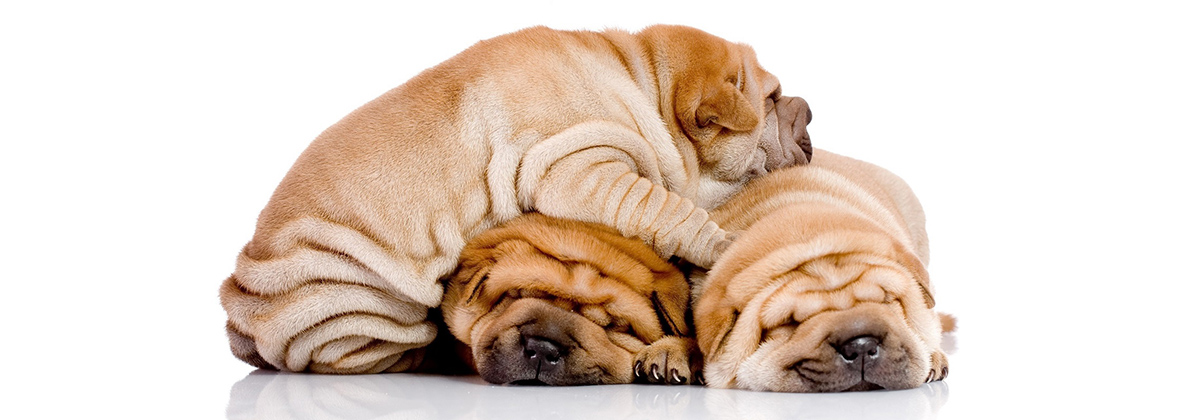29 Mar Different Facts About Shar-Pei (Part 2)
Wrinkle dogs are quiet and we can even keep them in the apartment. These dogs are mostly good guards, and their independent personality sometimes causes them to be isolated. Shar-Pei dogs like to spend most of their time with humans and be with their owners. Their relationship with dogs and other animals is harsh. Of course, with good training, we can improve this behaviour to some extent. In the first part, we explained the behavioural and moral characteristics as well as his relationship with dogs and other children. In this section, we’re going to explain how to groom them.
Other grooming tips
Dental care
Brush dogs’ teeth at least two to three times a week. If you don’t want to prevent gum disease and bad breath for your dog, it’s better to brush his teeth every day. So you must know how to brush this breed’s teeth. Get your dog accustomed to teeth brushing, cleaning and examining his body since he was a puppy. Touch his paws (dogs are sensitive on their paws) and look into his mouth. Also, use encouragement and treats to make grooming a pleasant experience. So cleaning and veterinary examinations won’t be difficult for him when he grows up.
Nail trimming
You have to trim the dog’s nails once or twice a month, otherwise, problems such as fractures (which also cause a lot of pain) will occur. Whenever you hear the sound of nails hitting the ground, it’s clear that they are very tall and you should trim them. Dogs’ nails have veins, and if they get too short, they may bleed. So next time he will be scared and run away if he sees the nail clipper. If you don’t have experience in trimming dog nails, it’s better to ask a reputable groomer to help you.
Cleaning the ears
You should check a dog’s ears every week for redness or a bad odour (which could indicate an infection). Then wipe with a cotton ball soaked in a mild detergent solution with a balanced PH to reduce the risk of infection. Shar-pei’s ears have smaller canals and are prone to irritation and infection. You should take care of them more than other breeds. Don’t use an ear cleaner to clean these breed’s ears, and be careful no water enters their ears when bathing. Don’t insert anything into the dog’s ear canal and only clean the tulip and outer ear.
Shar-Pei keeping conditions
Shar-Pei can live comfortably in the city and confined space such as an apartment provided he has the opportunity to exercise and be physically active every day. He doesn’t even need to have a yard, but if he can get out of the house and walk, it’s very good for him. If you have a yard, you should be sure to think of a fence, because he’s sensitive to his territory.
In general, this dog is happy to be with his owner, and he doesn’t care much where he lives. This breed can be aggressive towards other dogs, so you should take him out with a collar. Also, his noise is relatively low and he doesn’t bark a lot. His short snout causes him to heat up quickly. In summer, you should keep him indoors and turn on the fan or air conditioner. Also, his short snout causes snoring and itching of the chest and is unable to run.
Shar-pei dog diseases
Shar-pei dogs are prone to several diseases, especially skin problems, some of which we introduce here.
Shar-pei recurrent fever syndrome or Patellofemoral pain syndrome
The disease causes swelling of the knee joint (sometimes the knee of both feet), reluctance to walk, abdominal pain, vomiting, diarrhea, shortness of breath, and one or more episodes of fever ranging from 39.5 to 41.5 degrees for no apparent reason. The onset of the fever is usually from 18 months of age onwards, but it can also occur in adulthood. The fever lasts for 24 to 36 hours and the veterinarian tries to reduce the dog’s fever and pain.
Hypothyroidism
Hypothyroidism is treated with medication and diet. This disease can cause other problems, such as:
- Epilepsy
- Alopecia (hair loss)
- Obesity
- Lethargy
- Darkening of the skin (hyperpigmentation)
- Purulent discharge from the skin (pyoderma)
Elbow dysplasia
Dog dysplasia destroys the joint, and veterinarians believe it’s caused by abnormal growth, resulting in joint deformity and weakness. In mild cases, the dog may develop osteoarthritis and in severe cases become lame. Treatment for this problem includes:
- Surgery
- Weight Loss
- Prescribing anti-inflammatory drugs




Sorry, the comment form is closed at this time.